Features
Greatest ‘Lovers’ Quarrel’ of all time
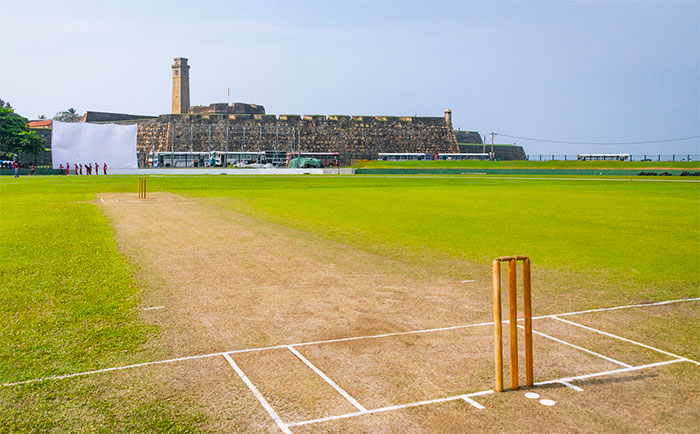
Mahinda-Richmond Big match – 1972
By Captain Chandra
Godakanda Arachchi
It was 50 years ago that the beautiful port city of Galle witnessed the 67th Mahinda-Richmond “Lovers’ Quarrel”, on 24 and 25 March 1972. A 33-year-old batting record, set by a batsman from Mahinda College, in 1939 was broken by a Richmondite, on the first day of play, and then the new record was smashed the following day by a Mahindian. The two-day event was full of drama, thrills, fun, and excitement.
There couldn’t have been a better setting for the game played on a matting wicket prior to the turf wicket days, ably prepared by the veteran George and Peter, ground staff of the Galle CC, with the Dutch Fort in the backdrop, adjacent to the beautiful Galle bay, with no buildings, other than the historic Galle Cricket Club on the Northern flank of the ground, with a white picket fence, Gamini Football Club too was on the Northern side more towards the Railway station, and the scoreboard towards the eastern side of the ground. It was a practice from the colonial era to put up cadjan thatched huts, on the Western side of the ground by both schools, for the students, academic staff, invitees, old boys and other supporters, with the regulars having a few temporary tents on the Southern flank of the ground. Renowned Principal of Richmond College (1906 to 1922) Rev W. J. T. Small, who officiated the big match in 1907, was in the Richmond tent. (Rev Small officiated the big match in 1907, with another renowned, former principal of Mahinda College Frank Lee Woodward). The eastern side of the ground accommodated people from all walks of life, in Galle, some seated on the boundary line while others standing just outside.
With this beautiful setting for the game, the two captains, Ivan Kariyawasam and Prasad Kariyawasam (interestingly captains bearing the same surname only for the second time in the Galle big match history) walked to the middle for the toss of the coin to the accompaniment of rapturous cheers from boys from both schools, and supporters with black and gold flags, as well as red and blue flags, flying high in both camps. Richmond captain having won the toss decided to take the first lease unsurprisingly and quite rightly as the outfield was very dry and expected to be fast due to the prevailing dry weather.
Mahinda
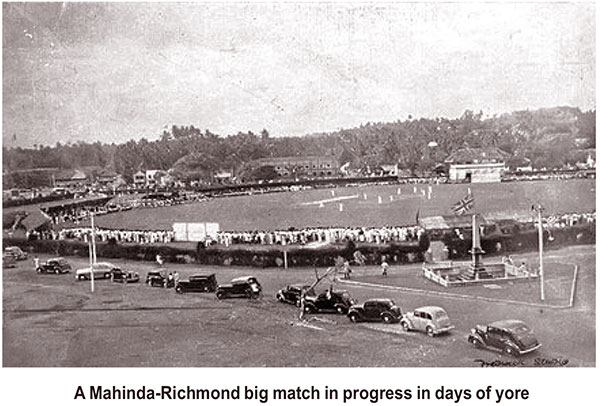 Ivan Kariyawasam (Captain) PHKH Ranasinghe (Vice Captain) Saliya Samaranayake, Gamini Karunanayake, Ananda Wijegunawardane, D.L. Stanley De Silva, Gamini Amendra, D.Jayantha Mendis, Jagath Ariyaratne, K.G. Wanigaratne, and Mervin Wickremaratne
Ivan Kariyawasam (Captain) PHKH Ranasinghe (Vice Captain) Saliya Samaranayake, Gamini Karunanayake, Ananda Wijegunawardane, D.L. Stanley De Silva, Gamini Amendra, D.Jayantha Mendis, Jagath Ariyaratne, K.G. Wanigaratne, and Mervin Wickremaratne
Coach: Frank Guruge Master in charge: D E Jayanetti
Richmond
Prasad Kariyawasam (Captain) Dudley Dias (Vice Captain) Hema Dissanayake, Wasantha G Meegoda, L. Dias, Ravi Arunthawanathan, P. Ranatunge, S. Amarasiriwardane, Ranjan Jayasinghe, U. Hemalal and A. Abeyratne, Coach: Marcus Jayasinghe Master in charge: Mahindapala De Silva.
Mahinda was considered the underdog, with Richmond having performed better during the season, though it is a tradition of Mahindians to leave any statistics behind and get on with the job as best as they could. Captain Ivan led his team to the field, followed by Richmond opening batsmen Hema Dissanayake and Wasantha Meegoda. The match started with D L Stanley De Silva bowling the first over with Hema Dissanayake facing the first ball, followed by P H K H Ranasinghe bowling from left arm leg spin in Fort end. It was the first time in big match history that a spinner opened bowling. Later Hema Dissanayake was caught by Ivan Kariyawasam off the bowling of Mervyn Wicramarathne when the Richmond score was 43 with Mahinda camp jumping up in joy. Prasad Kariyawasam walked to the middle, amidst cheers from Richmondites and their supporters, not long after L K Munasinghe (Loku Mune), an old boy of Mahinda providing entertainment for the boys with Mahinda flag flying high in his hand sprinted along the boundary line towards where K. G. Wanigarathne was fielding at deep fine leg as the ball skied by Prasad towards Wanige, only to be disappointed when the ball sailed through the gap between his body and the hands and there was pin drop silence in the Mahinda camp. Prasad hadn’t even opened his account then. It was a sitter never to be missed, and the fileder had ample time to take the catch. In lighter vein, this incident would go down cricketing history of Mahinda College as the most crucial dropped catch in the 20th century. Loku Mune started walking back muttering to himself.
Prasad took full advantage of the life given by Mahindians, making steady progress. Second wicket, Wasantha Meegoda being dismissed with the Richmond score at 99. Whilst Prasad was consolidating his innings to the merriment of Richmondites. Third wicket fell when the total was 168. Dudley Dias was out when the Richmond score was 189 with Luxman Dias following Dudley back to the dressing room soon afterwards. Prasad, still at the wicket in his nineties, was again dropped behind the wicket. It was quite unfortunate for Mahinda whilst Richmondites were over the moon. Ravi Aruthwanathan was the next batsman and he was to face left arm leg spinner Ranasinghe and was out for 12 with Prasad still needing a few more runs to achieve his goal of 156 runs, to break the 33-year-old record held by Sirisena Hettige of Mahinda since 1939. Everyone was at the edge of their seats with the Mahindians hoping for the dismissal of Prasad, who was batting so confidently.
Prasad reached the target of 156 in style to the roar of cheer of Richmondites, who invaded the pitch in joy (quite usual at big matches) with Richmond flags flying high; Prasad declared theRichmond innings when the total was 274 for five wickets. It was a moment of great pride and achievement for skipper Prasad and all Richmondites alike. Former Principal of Richmond Rev Small watching the proceedings from the Richmond tent was elated with the seemingly formidable total posted by Richmondites.
Declared for five wickets
 It was Mahinda’s turn to face the music having toiled under the hot sun fielding almost all day, the strategy was discussed among the team mates with the coach, master-in- charge D E Jayanetti and a few past cricketers. It was decided to bat till close of play without losing a wicket. Prasad led his team to the field followed by Mahinda’s opening pair Saliya Samaranayake and Gamini Karunanayke walking to the middle with about one hour’s play left for the day. Mahinda openers started well facing Richmond fast bowlers Hema Dissanayake and Abeyratne though with half hour before the end of the day’s play, Saliya was caught by Prasad off Wasantha Meegoda’s bowling when the total was 19. It should not be an excuse though Saliya would have been exhausted after having kept wickets nearly the whole day and then having to open the batting. There was no such player as a night watchman at the time, P H K H Ranasinghe (Rane) was compelled to walk to the middle amidst cheers from the Mahinda camp. Rane played a defensive role until the close of play only scoring a single in the last ball of the final over. Day’s play ended with Gamini and Rane at the crease with the Mahinda total at 34 for one wicket. The day’s honours certainly belonged to Richmond captain Prasad Kariyawasam standing out.
It was Mahinda’s turn to face the music having toiled under the hot sun fielding almost all day, the strategy was discussed among the team mates with the coach, master-in- charge D E Jayanetti and a few past cricketers. It was decided to bat till close of play without losing a wicket. Prasad led his team to the field followed by Mahinda’s opening pair Saliya Samaranayake and Gamini Karunanayke walking to the middle with about one hour’s play left for the day. Mahinda openers started well facing Richmond fast bowlers Hema Dissanayake and Abeyratne though with half hour before the end of the day’s play, Saliya was caught by Prasad off Wasantha Meegoda’s bowling when the total was 19. It should not be an excuse though Saliya would have been exhausted after having kept wickets nearly the whole day and then having to open the batting. There was no such player as a night watchman at the time, P H K H Ranasinghe (Rane) was compelled to walk to the middle amidst cheers from the Mahinda camp. Rane played a defensive role until the close of play only scoring a single in the last ball of the final over. Day’s play ended with Gamini and Rane at the crease with the Mahinda total at 34 for one wicket. The day’s honours certainly belonged to Richmond captain Prasad Kariyawasam standing out.
Day 2
Rane was on old Galle CC ground floor near the stairs when the late P A D A Theodore, sports lover, the legendary teacher of Mahinda College, called Rane for a chat, inspired Rane with all the encouragement basically advising him to take his time to settle down to the business advising him that he could achieve the unthinkable. Mahinda’s strategy was reviewed, deciding first to overcome the challenge of scoring 174 runs to avoid a follow on, but the Richmondites would have had other ideas. Umpires took up their positions on day two sharp at 1000 hrs , Prasad led his team to the field followed by Karunanayke and Rane walking to the middle to face the challenge of scoring more than 175 in the first innings which was considered a very good score whilst Richmond having posted a very good total. Everyone seemed excited on day two having witnessed how the game unfolded on day one. Proceedings on day two began with different expectations from the two camps, Richmond wanting to bowl Mahindians out quickly though Mahindian’s strategy was to reach Richmond score of 174. Both Gamini Karunanayke and Rane started making progress steadily scoring runs confidently, but Karunanayake was bowled by U Hemalal for 41 runs when the total was 83. Captain Ivan was the next batsman to join Rane who was out LBW for 9 off Prasad’s left arm leg spin bowling when the total was 110 for three. This was still before lunch and it really seemed a steep curve for Mahindians to achieve what they desired to. However, three down batsman Ananda Wjegunawardane steadied the ship and he was not out with Rane at the lunch break with Rane scoring 88 runs not out batting confidently with the total of 159 runs for three wickets. Mahinda’s strategy was reviewed again at lunch as the first target of 174 runs now within easy reach, deciding for Rane to get through his century as the preliminary target, thereafter, scoring as much as possible beyond that.
Proceedings resumed post lunch steadily again with different expectations from Richmond and Mahinda with Rane continuing to bat confidently reaching his century elegantly to the cheer of Mahinda supporters. Cricket lovers who read the game correctly at the time were quite confident the way Rane played his game on the day that he was capable of regaining the record though it was not in Rane’s thoughts yet. The play continued and not long after Wjegunawardane was the next to go caught by Hema Dissanayake off a delivery from Ranathunga when the total was 221 for four wickets. Next batsman in was sixteen-year-old D L Stanley De Silva (who was a member of Sri Lanka’s World Cup team in 1979 as a fast bowler, a player with huge potential unfortunately died young following an accident riding his motorcycle) who scored a quickfire 35 runs before being bowled by Hemalal when the total was 276 for 5 overtaking Richmond’s score.
Rane was in his 120s, contemplating the possibility of regaining the batting record then deciding to bat cautiously while remaining batsmen held the fort. Gamini Amendra, last of the famous Amendra brothers was in, but out for six runs when the total was 289. Mendis was next, scoring valuable 22 runs when the score was 309. In the meantime, Rane was making ground slowly, but steadily with reaching 157 in his mind when he was dropped by Ranjan Jayasinghe at mid-off when he was on 142. With the pendulum swinging either way with everyone watching the game with excitement. What a let off when dropped 15 runs shy of the target! Jagath Ariyarathne scored 12 runs then the last man in, anything could happen Rane regaining the record or Mahindians all out. K G Wanigarathne was at the crease after the fall of Ariyarathne supported well as Rane was inching towards the target. In fact, Rane scored singles from 150 until 157 yet the scoreboard indicated 150 (those who witnessed cricket matches in Galle at the time would remember the scoreboard was manual and changes were made every 10 runs). It was a glorious moment of a lifetime Rane establishing a batting record within 24 hours after it was broken with supporters cheering loudly, some shedding tears of joy with some running to the middle to congratulate Rane, hugging him, someone bringing a white pigeon to the middle handing Rane for releasing, some dancing around him. What a scene it was! Prasad was the first to congratulate Rane though it wasn’t the practice of players in the dressing room running to the field on such occasions, Ivan and his team resisted the urge running to the field! Spectators burst into cheers when Rane reached 157 seemed like never ending! Mahinda’s first innings was declared at the tea break at 359 for nine wickets with Rane losing his wicket for 162 runs.
Declared for nine wickets
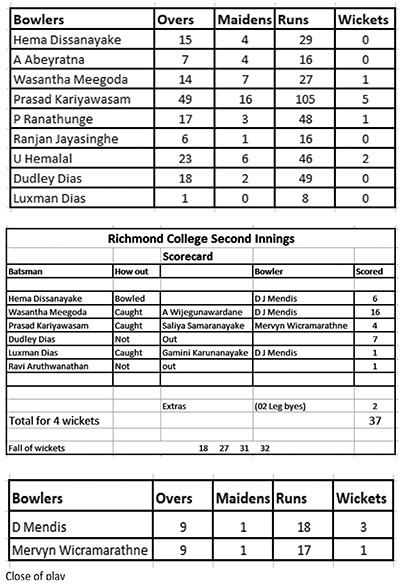 Richmond started batting in the second innings with skipper Ivan having a different strategy in terms of opening bowling combination. D Mendis was the opening bowler followed by his opening bowling partner Mervyn Wicramarathne. The trick worked well; Hema Dissanayake got out for 6 runs followed by skipper Prasad for 4 when the total was 18 and 27 respectively. Next to go was Laxman Dias, who scored just one run followed by Meegoda having scored 16 runs. At the close of play Richmond were 37 for 4 wickets and the game was drawn!
Richmond started batting in the second innings with skipper Ivan having a different strategy in terms of opening bowling combination. D Mendis was the opening bowler followed by his opening bowling partner Mervyn Wicramarathne. The trick worked well; Hema Dissanayake got out for 6 runs followed by skipper Prasad for 4 when the total was 18 and 27 respectively. Next to go was Laxman Dias, who scored just one run followed by Meegoda having scored 16 runs. At the close of play Richmond were 37 for 4 wickets and the game was drawn!
Mahinda carried trophies for the Best Batsman – Ranasinghe and Mendis were adjudged the Best bowler and Prasad winning a special award for his extraordinary performance. Mahinda’s total of 359 is a record for an innings, and a combined total of 633 from both schools is a record too. Mahinda faced 150 overs in total.
Richmond coach Marcus Jayasinghe walking to Mahinda dressing room congratulated Ivan and the team not long after the Principal of Mahinda College J. H. Gunasekara arrived in the dressing room to congratulate the team. This game had it all, filled with fun, excitement, suspense, and joy. Prasad in his batting demonstrated all the qualities a super batsman should possess and no doubt demonstrated his leadership skills too. Ivan proved his mettle by coming from behind, standing tall under tremendous pressure to deal with the situation and come out a winner for his team! Ivan was a giant in the game.
It was an outstanding performance by Vice Captain Ranasinghe beyond any words to regain the record for Mahinda within 24 hours of losing it, his ability to listen to advice and choose what’s right to take on board, commitment from the word go, patience, confidence, endurance, and skill to counter opposition strategies to get him out, a fierce competitor and a role model for any youngster. Interesting to note that both record breaking batsmen were right hand bat and left arm leg spin bowlers. The record was established by P H K H Ranasinghe stands intact to date after 50 years on!
The game was played in an era when not many facilities were available for players unlike in this day and age.
Both teams played the game in the true spirit of cricket while being competitive. Both captains led their teams from the front despite swinging fortunes and odds either way. The way the game was played strengthened the long-standing friendship between two premier schools in Galle. Cricket is a game that promotes sportsmanship, discipline, and self-respect which both teams demonstrated the qualities beyond doubt. Ultimate winner was cricket!
Thanks to Rear Admiral Ivan Kariyawasam and P H K H Ranasinghe for the valuable information. Author of this write up was a schoolboy at the time watching the game from the Mahinda tent.
Feedback: chandra.godakanda@hotmail.com
Features
Democracy faces tougher challenges as political Right beefs-up presence

 It is becoming increasingly evident that the democracy-authoritarianism division would be a major polarity in international politics going forward. It shouldn’t come as a surprise if quite a few major states of both East and West gain increasing inspiration from the ‘world’s mightiest democracy’ under President Donald Trump from now on and flout the core principles of democratic governance with impunity.
It is becoming increasingly evident that the democracy-authoritarianism division would be a major polarity in international politics going forward. It shouldn’t come as a surprise if quite a few major states of both East and West gain increasing inspiration from the ‘world’s mightiest democracy’ under President Donald Trump from now on and flout the core principles of democratic governance with impunity.
It is the political Right that would gain most might in this evolving new scheme of things. Whether it be the US itself, France, Israel or Turkey, to name just a few countries in the news, it is plain to see that the Right is unleashing its power with hardly a thought for the harm being done to key democratic institutions and norms.
In fact, Donald Trump and his Republican hard liners led from the front, so to speak, in this process of unleashing the power of the Right in contemporary times. It remains a very vital piece of history that the Right in the US savaged democracy’s most valued institutions on January 6, 2021, when it ran amok with the tacit backing of Trump in the US Capitol.
What was being challenged by the mob most was the ‘will of the people’ which was manifest in the latter’s choice of Joe Biden as US President at the time. To date Trump does not accept that popular verdict and insists that the election in question was a flawed one. He does so in the face of enlightened pronouncements to the contrary.
The US Right’s protégé state, Israel, is well on course to doing grave harm to its democratic institutions, with the country’s judiciary being undermined most. To cite two recent examples to support this viewpoint, the Israeli parliament passed a law to empower the country’s election officials to appoint judges, while Prime Minister Netanyahu has installed the new head of the country’s prime security agency, disregarding in the process a Supreme Court decision to retain the former head.
Such decisions were made by the Netanyahu regime in the face of mounting protests by the people. While nothing new may be said if one takes the view that Israel’s democratic credentials have always left much to be desired, the downgrading of a democratic country’s judiciary is something to be sorely regretted by democratic opinion worldwide. After all, in most states, it is the judiciary that ends up serving the best interests of the people.
Meanwhile in France, the indications are that far Right leader Marine Le Pen would not be backing down in the face of a judicial verdict that pronounces her guilty of corruption that may prevent her from running for President in 2027. She is the most popular politician in France currently and it should not come as a surprise if she rallies further popular support for herself in street protests. Among other things, this will be proof of the growing popular appeal of the political Right. Considering that France has been a foremost democracy, this is not good news for democratic opinion.
However, some heart could be taken from current developments in the Gaza and Turkey where the people are challenging their respective dominant governing forces in street protests largely peacefully. In the Gaza anti-Hamas protests have broken out demanding of the group to step down from power, while in Turkey, President Erdogan’s decades-long iron-fist rule is being challenged by pro-democracy popular forces over the incarceration of his foremost political rival.
Right now, the Turkish state is in the process of quashing this revolt through a show of brute force. Essentially, in both situations the popular demand is for democracy and accountable governance and such aims are generally anathema in the ears of the political Right whose forte is repressive, dictatorial rule.
The onus is on the thriving democracies of the world to ensure that the Right anywhere is prevented from coming to power in the name of the core principles and values of democracy. Right now, it is the European Union that could fit into this role best and democratic opinion is obliged to rally behind the organization. Needless to say, peaceful and democratic methods should be deployed in this historic undertaking.
Although the UN is yet to play an effective role in the current international situation, stepped up efforts by it to speed up democratic development everywhere could yield some dividends. Empowerment of people is the goal to be basically achieved.
Interestingly, the Trump administration could be seen as being in league with the Putin regime in Russia at present. This is on account of the glaringly Right wing direction that the US is taking under Trump. In fact, the global balance of political forces has taken an ironic shift with the hitherto number one democracy collaborating with the Putin regime in the latter’s foreign policy pursuits that possess the potential of plunging Europe into another regional war.
President Trump promised to bring peace to the Ukraine within a day of returning to power but he currently is at risk of cutting a sorry figure on the world stage because Putin is far from collaborating with his plans regarding Ukraine. Putin is promising the US nothing and Ukraine is unlikely to step down from the position it has always held that its sovereignty, which has been harmed by the Putin regime, is not negotiable.
In fact, the China-Russia alliance could witness a firming-up in the days ahead. Speculation is intense that the US is contemplating a military strike on Iran, but it would face strong opposition from China and Russia in the event of such an adventurist course of action. This is on account of the possibility of China and Russia continuing to be firm in their position that Western designs in the Gulf region should be defeated. On the other hand, Iran could be expected to hit back strongly in a military confrontation with the US.
Considering that organizations such as the EU could be expected to be at cross-purposes with the US on the Ukraine and connected questions, the current world situation could not be seen as a replication of the conventional East-West polarity. The East, that is mainly China and Russia, is remaining united but not so the West. The latter has broadly fragmented into a democratic states versus authoritarian states bipolarity which could render the international situation increasingly unstable and volatile.
Features
Chikungunya Fever in Children

Chikungunya fever, a viral disease transmitted by mosquitoes, poses a significant health concern, particularly for children. It has been around in Sri Lanka sporadically, but there are reports of an increasing occurrence of it in more recent times. While often associated with debilitating joint pain in adults, its manifestations in children can present unique challenges. Understanding the nuances of this disease is crucial for effective management and prevention.
Chikungunya fever is caused by the chikungunya virus (CHIKV), an alphavirus transmitted to humans through the bites of infected Aedes aegypti and Aedes albopictus mosquitoes. These are the same mosquitoes that transmit dengue and Zika viruses, highlighting the overlapping risks in many areas of the world. It is entirely possible for chikungunya and dengue to co-circulate in the same area, leading to co-infections in individuals.
When a mosquito bites a person infected with CHIKV, it ingests the virus. After a period of growth and multiplication of the virus within the mosquito, the virus can be transmitted to another person through subsequent bites. Therefore, the mosquito acts as a vector or an intermediate transmitting agent that spreads the disease, but not as a reservoir of the disease. The spread of chikungunya is influenced by environmental factors that support mosquito breeding, such as stagnant water and warm climates. Urbanization and poor sanitation can exacerbate the problem by creating breeding grounds for these mosquitoes.
The clinical presentation of chikungunya in children can vary, ranging from mild to severe. While some infected children may even be asymptomatic and be normal for all intents and purposes, others can experience a range of symptoms, including a sudden onset of high fever, a common initial symptom. Pain in the joints of the body, while being a hallmark of chikungunya in adults, may be less pronounced in children. However, they can still experience significant discomfort and this must be kept in mind during processes of diagnosis and treatment. It is also important to remember that joint pains can present in various forms, as well as in different locations of the body. There is no characteristic pattern or sites of involvement of joints. Muscle aches and pains can accompany the fever and joint pain as well. A headache, too, could occur at any stage of the disease. Other symptoms may include nausea, vomiting, and fatigue as well.
A reddish elevated rash, referred to in medical jargon as a maculopapular rash, is frequently observed in children, sometimes more so than in adults. While chikungunya is known to cause such a rash, there is a specific characteristic related to nasal discoloration that is worth noting. It is called the “Chik sign” or “Brownie nose” and refers to an increased darkening of the skin, particularly on the nose. This discolouration just appears and is not associated with pain or itching. It can occur during or after the fever, and it can be a helpful clinical sign, especially in areas with limited diagnostic resources. While a generalised rash is a common symptom of chikungunya, a distinctive darkening of the skin on the nose is a particular characteristic that has been observed.
In some rare instances, particularly in infants and very young children, chikungunya can lead to neurological complications, such as involvement of the brain, known as encephalitis. This is associated with a change in the level of alertness, drowsiness, convulsions and weakness of limbs. Equally rarely, some studies indicate that children can experience bleeding tendencies and haemorrhagic manifestations more often than adults.
Diagnosis is typically made through evaluating the patient’s symptoms and medical history, as well as by special blood tests that can detect the presence of CHIKV antibodies (IgM and IgG) or the virus itself through PCR testing.
There is no specific antiviral treatment for chikungunya. Treatment focuses on relieving symptoms and allowing the body to recover on its own. Adequate rest is essential for recovery, and maintaining hydration is crucial, especially in children with fever. Paracetamol in the correct dosage can be used to reduce fever and pain. It is important to avoid aspirin, as it can increase the risk of a further complication known as Reye’s syndrome in children. In severe cases, hospitalisation and supportive care may be necessary.
While most children recover from chikungunya without any major issues, some may experience long-term sequelae. Joint pain can persist for months or even years in some individuals, impacting their quality of life. In rare cases, chikungunya can lead to chronic arthritis. Children that have suffered from neurological complications can have long term effects.
The ultimate outcome or prognosis for chikungunya in children is generally favourable. Most children recover fully within a few days or a couple of weeks. However, the duration and severity of symptoms can vary quite significantly.
Prevention is key to controlling the spread of chikungunya. Mosquito control is of paramount importance. These include eliminating stagnant water sources where mosquitoes breed, using mosquito repellents, wearing long-sleeved clothing and pants, using mosquito nets, especially for young children and installing protective screens on windows and doors. While a chikungunya vaccine is available, its current use is mainly for adults, especially those traveling to at risk areas. More research is being conducted for child vaccinations.
Chikungunya outbreaks can strain healthcare systems and have significant economic consequences. Public health initiatives aimed at mosquito control and disease surveillance are crucial for preventing and managing outbreaks.
Key considerations for children are that some of them, especially infants and young children, are more vulnerable to severe chikungunya complications and early diagnosis and supportive care are essential for minimising the risk of long-term sequelae. Preventing mosquito bites is the most effective way to protect children from chikungunya. By understanding the causation, clinical features, treatment, and prevention of chikungunya, parents, caregivers, and healthcare professionals can work together to protect children from this illness that could sometimes be quite debilitating.
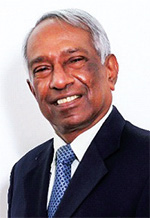 Dr B. J. C. Perera
Dr B. J. C. Perera
MBBS(Cey), DCH(Cey), DCH(Eng), MD(Paed), MRCP(UK), FRCP(Edin), FRCP(Lond), FRCPCH(UK), FSLCPaed, FCCP, Hony. FRCPCH(UK), Hony. FCGP(SL)
Specialist Consultant Paediatrician and Honorary Senior Fellow, Postgraduate Institute of Medicine, University of Colombo, Sri Lanka.
Joint Editor, Sri Lanka Journal of Child Health and Section Editor, Ceylon Medical Journal
Founder President, Sri Lanka College of Paediatricians – 1996-97)
Features
The Great and Little Traditions and Sri Lankan Historiography
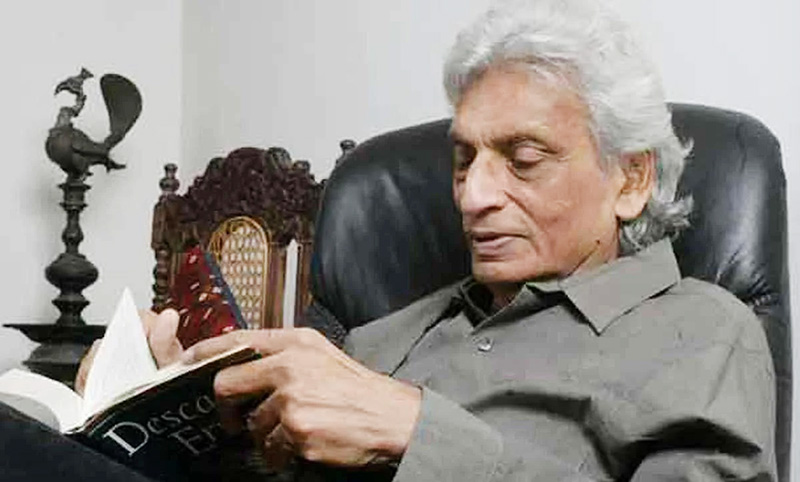
Power, Culture, and Historical Memory:
(Continued from yesterday)
Newton Gunasinghe, a pioneering Sri Lankan sociologist and Marxist scholar, made significant contributions to the study of culture and class in Sri Lanka by incorporating the concepts of great and little traditions within an innovative Marxist framework. His theoretical synthesis offered historians a fresh perspective for evaluating the diversity of past narratives.
At the same time, Michel Foucault’s philosophical intervention significantly influenced the study of historical knowledge. In particular, two of his key concepts have had a profound impact on the discipline of history:
1. The relationship between knowledge and power – Knowledge is not merely an objective truth but a manifestation of the power structures of its time.
2. The necessity of considering the ‘other’ in any conceptual construction – Every idea or framework takes shape in relation to its opposite, highlighting the duality inherent in all intellectual constructs.
These concepts challenged historians to rethink their approaches, prompting them to explore the dynamic interplay between knowledge, power, and culture. The existence of Little Tradition prompted historians to pay attention to ‘other’ histories.
The resurgence of ethnic identities and conflicts has brought renewed attention to the dichotomy of culture, steering the discourse in a new direction. The ethnic resurgence raises three key issues. First, the way non-dominant cultures interpret the past often differs from the narratives produced by dominant cultures, prompting the question: What is historical truth? Second, it underscores the importance of studying the histories of cultural identities through their own perspectives. Finally, and most importantly, it invites reflection on the relationship between ‘Little Traditions’ and the ‘Great Tradition’—how do these ‘other’ histories connect to broader historical narratives?
When the heuristic construct of the cultural dichotomy is applied to historical inquiry, its analytical scope expands far beyond the boundaries of social anthropology. In turn, it broadens the horizons of historical research, producing three main effects:
1. It introduces a new dimension to historical inquiry by bringing marginalised histories to the forefront. In doing so, it directs the attention of professional historians to areas that have traditionally remained outside their scope.
2. It encourages historians to seek new categories of historical sources and adopt more innovative approaches to classifying historical evidence.
3. It compels historians to examine the margins in order to gain a deeper understanding of the center.
The rise of a new theoretical school known as Subaltern Studies in the 1980s provided a significant impetus to the study of history from the perspective of marginalised and oppressed groups—those who have traditionally been excluded from dominant historical narratives and are not linked to power and authority. This movement sought to challenge the Eurocentric and elitist frameworks that had long shaped the study of history, particularly in the context of colonial and postcolonial societies. The writings of historians such as Ranajit Guha and Eric Stokes played a pioneering role in opening up this intellectual path. Guha, in particular, critiqued the way history had been written from the perspective of elites—whether colonial rulers or indigenous upper classes—arguing that such narratives ignored the agency and voices of subaltern groups, such as peasants, laborers, and tribal communities.
Building upon this foundation, several postcolonial scholars further developed the critical examination of power, knowledge, and representation. In her seminal essay Can the Subaltern Speak?, Gayatri Chakravorty Spivak questioned whether marginalized voices—especially those of subaltern women—could truly be represented within dominant intellectual and cultural frameworks, or whether they were inevitably silenced by hegemonic. Another major theorist in this field, Homi Bhabha, also focused on the relationship between knowledge and social power relations. His analysis of identity formation under colonialism revealed the complexities of power dynamics and how they persist in postcolonial societies.
Together, these scholars significantly reshaped historical and cultural studies by emphasising the voices and experiences of those previously ignored in dominant narratives. Their work continues to influence contemporary debates on history, identity, and the politics of knowledge production.
The Sri Lankan historiography from very beginning consists of two distinct yet interrelated traditions: the Great Tradition and the Little Traditions. These traditions reflect different perspectives, sources, and modes of historical transmission that have influenced the way Sri Lanka’s past has been recorded and understood. The Great Tradition refers to the formal, written historiography primarily associated with elite, religious, and state-sponsored chronicles. The origins of the Great Tradition of historiography directly linked to the introduction of Buddhism to the island by a mission sent by Emperor Asoka of the Maurya dynasty of India in the third century B.C. The most significant sources in this tradition include the Mahāvaṃsa, Dīpavaṃsa, Cūḷavaṃsa, and other Buddhist chronicles that were written in Pali and Sanskrit. These works, often compiled by Buddhist monks, emphasise the island’s connection to Buddhism, the role of kingship, and the concept of Sri Lanka as a sacred land linked to the Buddha’s teachings. The Great Tradition was influenced by royal patronage and aimed to legitimise rulers by presenting them as protectors of Buddhism and the Sinhala people.
In contrast, the Little Tradition represents oral histories, folk narratives, and local accounts that were passed down through generations in vernacular languages such as Sinhala and Tamil. These traditions include village folklore, ballads, temple stories, and regional histories that were not necessarily written down but played a crucial role in shaping collective memory. While the Great Tradition often portrays a centralised, Sinhala-Buddhist perspective, the Little Tradition captures the diverse experiences of various communities, including Tamils, Muslims.
What about the history of those who are either unrepresented or only marginally represented in the Great Tradition? They, too, have their own interpretations of the past, independent of dominant narratives. Migration from the four corners of the world did not cease after the 3rd century BC—so what about the cultural traditions that emerged from these movements? Can we reduce these collective memories solely to the Sokari Nadagams?
The Great Traditions often celebrate the history of the ruling or majority ethnic group. However, Little Traditions play a crucial role in preserving the historical memory and distinct identities of marginalised communities, such as the Vedda and Rodiya peoples. Beyond caste history, Little Traditions also reflect the provincial histories and historical memories of peripheral communities. Examples include the Wanni Rajawaliya and the Kurunegala Visthraya. The historical narratives presented in these sources do not always align with those of the Great Tradition.
The growth of caste histories is a key example of Little Historical Traditions. Jana Wansaya remains an important source in this context. After the 12th century, many non-Goigama castes in Sri Lanka preserved their own oral historical traditions, which were later documented in written form. These caste-based histories are significant because they provide a localised, community-centered perspective on historical developments. Unlike the dominant narratives found in the Great Tradition, they capture the social, economic, and cultural transformations experienced by different caste groups. For instance, the Karava, Salagama, and Durava castes have distinct historical narratives that have been passed down through generations.
Ananda S. Kulasuriya traced this historical tradition back to the formal establishment of Buddhism, noting that it continued even after the decline of the Polonnaruwa Kingdom. He identified these records as “minor chronicles” and classified them into three categories: histories of the Sangha and Sasana, religious writings of historical interest, and secular historical works. According to him, the first category includes the Pujavaliya, the Katikavatas, the Nikaya Sangrahaya, and the Sangha Sarana. The second category comprises the Thupavamsa, Bodhi Vamsa, Anagatha Vamsa, Dalada Sirita, and Dhatu Vamsa, along with the two Sinhalese versions of the Pali Hatthavanagalla Vihara Vamsa, namely the Ehu Attanagalu Vamsa and the Saddharma Ratnakaraya. The third category consists of works that focus more on secular events than religious developments, primarily the Rajavaliya. Additionally, this category includes the Raja Ratnakaraya and several minor works such as the Sulu Rajavaliya, Vanni Rajavaliya, Alakesvara Yuddhaya, Sri Lanka Kadaim Pota, Kurunegala Vistaraya, Buddharajavaliya, Bamba Uppattiya, Sulu Pujavaliya, Matale Kadaim Pota, Kula Nitiya, and Janavamsaya (Kulasuriya, 1978:5). Except for a few mentioned in the third category, all other works are products of the Great Historical tradition.
Over the last few decades, Gananath Obeyesekera has traversed the four corners of Sri Lanka, recovering works of the Little Historical Traditions and making them accessible for historical inquiry, offering a new lens through which to reread Sri Lankan history. Obeyesekera’s efforts to recover the Little Historical Traditions remind us that history is never monolithic; rather, it is a contested space where power, culture, and memory continuously shape our understanding of the past. By bringing the Little Historical Traditions into the fold of Sri Lankan historiography, Obeyesekera challenges us to move beyond dominant narratives and embrace a more pluralistic understanding of the past. The recovery of these traditions is not just an act of historical inquiry but a reminder that power shapes what we remember—and what we forget. Sri Lankan history, like all histories, is a dialogue between great and little traditions and it is to engage both of them. His latest work, The Doomed King: A Requiem for Sri Vikrama Rajasinghe, is a true testament to his re-reading of Sri Lankan history.
BY GAMINI KEERAWELLA
-

 Sports4 days ago
Sports4 days agoSri Lanka’s eternal search for the elusive all-rounder
-

 News3 days ago
News3 days agoBid to include genocide allegation against Sri Lanka in Canada’s school curriculum thwarted
-
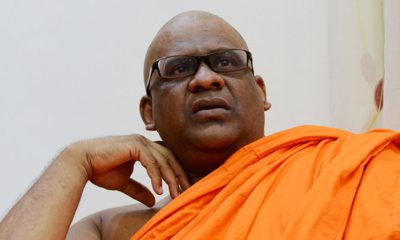
 News5 days ago
News5 days agoGnanasara Thera urged to reveal masterminds behind Easter Sunday terror attacks
-
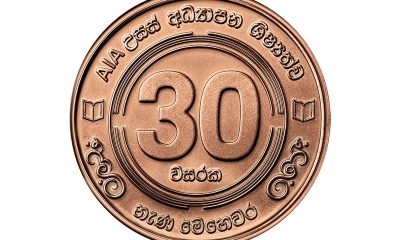
 Business6 days ago
Business6 days agoAIA Higher Education Scholarships Programme celebrating 30-year journey
-

 News4 days ago
News4 days agoComBank crowned Global Finance Best SME Bank in Sri Lanka for 3rd successive year
-

 Features4 days ago
Features4 days agoSanctions by The Unpunished
-
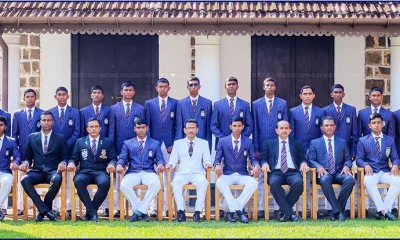
 Sports10 hours ago
Sports10 hours agoTo play or not to play is Richmond’s decision
-
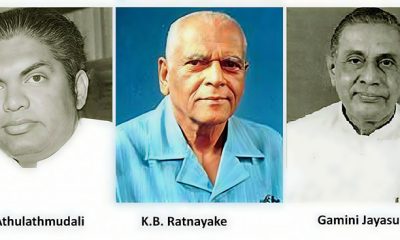
 Features4 days ago
Features4 days agoMore parliamentary giants I was privileged to know











